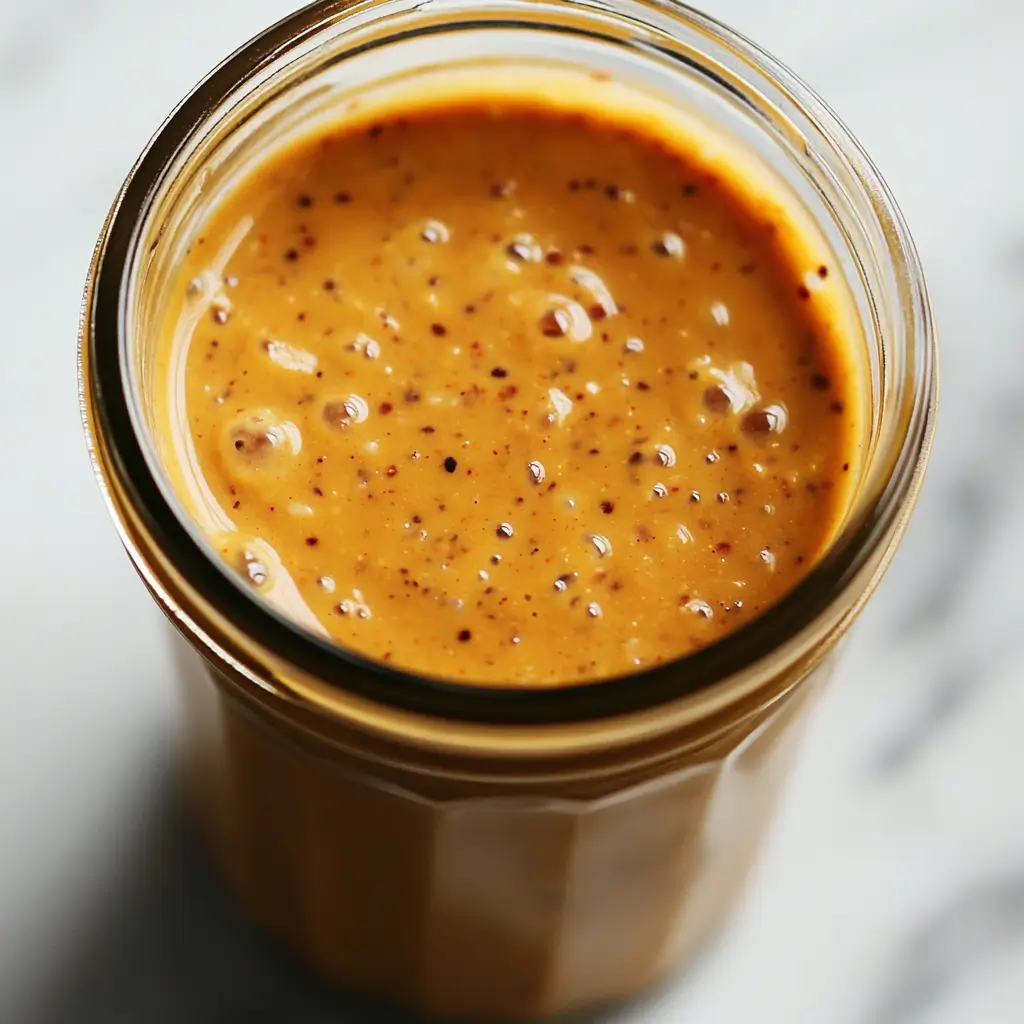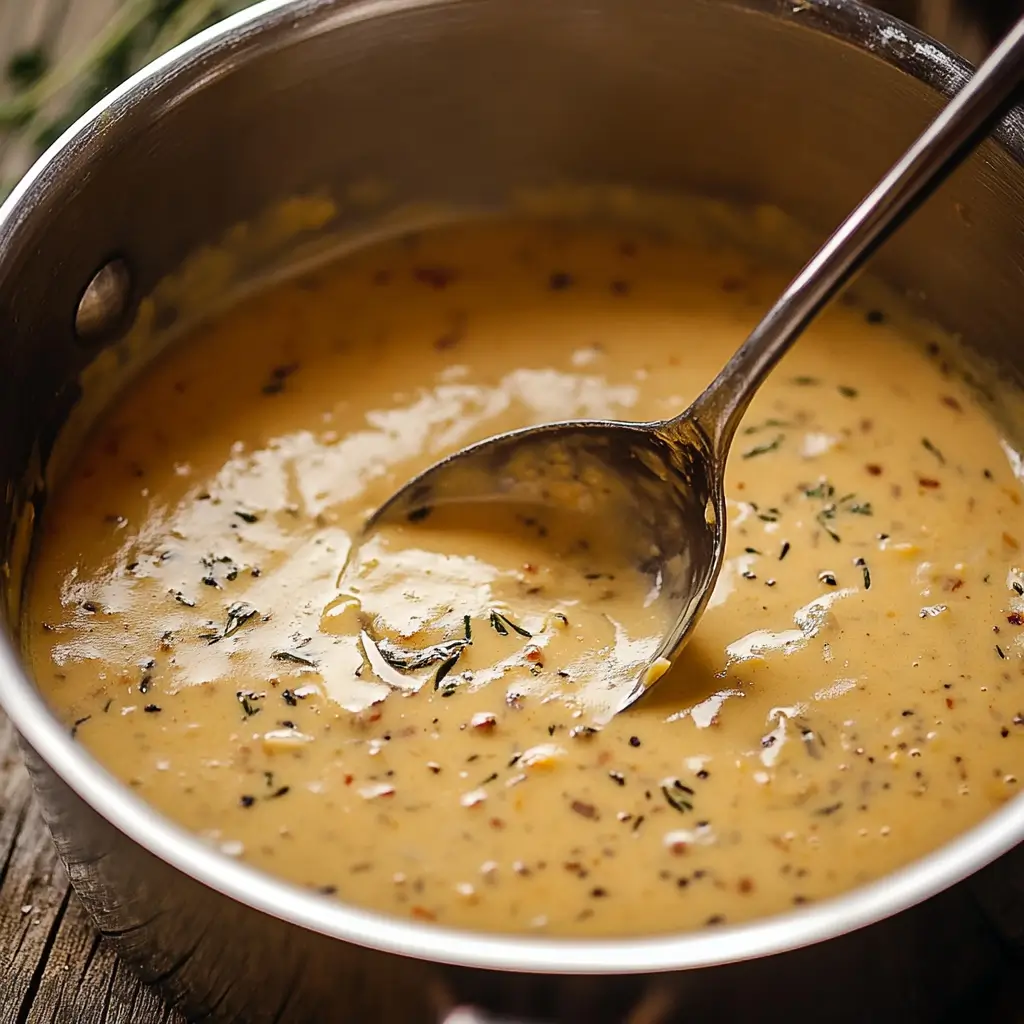When it comes to sauces that deliver a powerful punch of flavor, black peppercorn sauce sits confidently at the top. Not only is it rich and creamy, but it also adds depth, warmth, and a bold peppery bite that enhances a wide variety of dishes. Whether you’re topping a sizzling steak, drizzling over grilled tofu, or dipping crispy roasted potatoes, this sauce brings everything together beautifully. We will show you what makes black peppercorn sauce so special, how to make it step by step, and how to tailor it to your personal taste. Let’s dive in and elevate your meals with this unforgettable classic.
What Is Black Peppercorn Sauce?
Black peppercorn sauce is a creamy, savory condiment made with coarsely crushed peppercorns, butter, cream, garlic, and stock. Although it may sound simple, the result is anything but ordinary. It’s a sauce that feels indulgent and comforting while packing a serious punch. Moreover, the contrast of creamy texture with sharp peppery notes makes it a dynamic addition to any savory dish.

Traditionally, this sauce is served with steak in Western cuisine. However, it has also been adapted into Chinese cooking, where soy sauce, oyster sauce, and ginger often make an appearance. These cultural twists have given the black peppercorn sauce universal appeal. Consequently, you’ll find it served across fine-dining restaurants, casual steakhouses, and family kitchens worldwide.
If you’re preparing a hearty meal, you may want to explore a full steakhouse-style dinner. For example, this list of best side dishes for Delmonico steak offers perfect companions for peppercorn sauce. These combinations help you create a complete and satisfying meal without much effort.
Ingredients for Classic Black Peppercorn Sauce
Before you begin making your own black peppercorn sauce, it’s essential to gather the right ingredients. Because the sauce is simple, each component matters. Choose fresh, high-quality ingredients for the best results. For instance, always use whole peppercorns and crack them fresh for a stronger aroma and better texture. Avoid pre-ground pepper—it won’t deliver the same impact.
Additionally, butter and cream form the sauce’s rich base. However, you can substitute coconut cream or plant-based butter if you want a dairy-free version. This allows you to keep the creaminess without compromising your dietary choices. Equally important, garlic adds aromatic depth, while beef or vegetable stock provides a savory backbone.
Ingredient Table
| Ingredient | Amount | Notes |
|---|---|---|
| Black Peppercorns | 2 tbsp | Freshly cracked is best |
| Heavy Cream | ½ cup | Sub coconut cream for dairy-free |
| Butter | 2 tbsp | Use vegan butter if needed |
| Garlic (minced) | 2 cloves | Adds deep flavor |
| Beef or Veg Stock | ¾ cup | Low-sodium preferred |
Optionally, you may include a dash of Dijon mustard or a splash of brandy for added complexity. These small tweaks can elevate the sauce into something truly restaurant-worthy. Still, the basic version remains incredibly satisfying on its own.
Print
Black Peppercorn Sauce Recipe for Steak, Stir-Fries, and More
- Total Time: 20 minutes
- Yield: About 1 cup of sauce
Description
This Classic Black Peppercorn Sauce is a rich, creamy, and peppery delight that adds steakhouse-quality flavor to your home-cooked meals. Made with freshly cracked black pepper, butter, cream, and a savory stock base, this sauce elevates any grilled meat or roasted vegetable dish. Optional additions like Dijon mustard or brandy can enhance the complexity, making it adaptable to various palates and dietary preferences.
Ingredients
2 tbsp black peppercorns, freshly cracked
½ cup heavy cream (substitute with coconut cream for dairy-free option)
2 tbsp butter (use plant-based butter for dairy-free version)
2 cloves garlic, minced
¾ cup beef or vegetable stock (low-sodium preferred)
Optional: 1 tsp Dijon mustard or 1 tbsp brandy for added depth
Instructions
Melt the butter in a medium saucepan over medium heat.
Add the minced garlic and sauté for 30 seconds, just until fragrant.
Stir in the freshly cracked black peppercorns and toast them briefly to release their aroma.
Pour in the stock and scrape the bottom of the pan to deglaze and incorporate any fond.
Simmer the mixture for 5–7 minutes, allowing it to reduce and intensify in flavor.
Reduce the heat to low and slowly add the cream while stirring continuously.
Let the sauce simmer gently for 8–10 minutes, stirring occasionally, until it thickens enough to coat the back of a spoon.
Optional: Stir in Dijon mustard or brandy for added complexity.
Adjust the consistency as needed with a splash of stock. Strain for a smoother texture if desired.
Serve warm over steak, roasted vegetables, or your protein of choice.
Notes
For a dairy-free version, substitute both cream and butter with plant-based alternatives.
Incorporating meat drippings enhances flavor—ideal when serving with steak.
Strain the sauce for a velvety finish, or leave the cracked peppercorns in for texture.
Store leftovers in the fridge for up to 3 days and reheat gently over low heat.
- Prep Time: 5 minutes
- Cook Time: 15 minutes
- Category: Sauce & Dressings
- Cuisine: French-inspired
Nutrition
- Calories: 180 per serving
- Fat: 16g
- Carbohydrates: 3g
- Protein: 2g
Keywords: black peppercorn sauce
How to Make Black Peppercorn Sauce (Step-by-Step)
Now that you’ve assembled your ingredients, it’s time to cook. Follow these steps carefully, and you’ll have a sauce that rivals anything served at a steakhouse. The method is straightforward, but timing and heat control are crucial. For best results, always prep your ingredients before turning on the stove.
Firstly, melt the butter in a saucepan over medium heat. As soon as it begins to bubble, add the garlic and sauté it for about 30 seconds. Secondly, stir in the freshly cracked black peppercorns. This quick toast in hot fat brings out their full fragrance and flavor. Don’t skip this part—it’s essential for depth.
After that, pour in the stock and gently scrape the bottom of the pan. This releases the brown bits—called fond—that stick to the surface. Consequently, your sauce gains a rich, umami flavor. Let it simmer for 5 to 7 minutes so the liquid reduces and concentrates.
Then, lower the heat and add your cream slowly, stirring as you go. Continue cooking the sauce on low until it thickens, which usually takes about 8 to 10 minutes. The sauce should coat the back of a spoon. If it’s too thin, let it simmer longer. If it’s too thick, add a splash of stock to loosen it.
Surprisingly, you can also incorporate meat drippings if you’re preparing steak. This addition ties the sauce directly to the dish, enhancing harmony. In fact, it’s a technique often used in classic preparations like filet au poivre. Additionally, you can strain the sauce if you want it silky-smooth, though many prefer the rustic bite of whole peppercorns.
Moreover, black peppercorn sauce works wonderfully with other bold flavor profiles. For example, if you’re in the mood for something citrusy and spicy, you might enjoy this vibrant Caribbean lime lemon pepper sauce, which adds brightness to grilled meats or seafood.

Chinese Black Pepper Sauce vs. Western Style: What’s the Difference?
Although they share a name, Chinese and Western black pepper sauces differ significantly in taste, texture, and preparation. Western styles are cream-based and often use butter, garlic, and brandy. Conversely, Chinese versions skip the cream and focus on soy sauce, oyster sauce, Shaoxing wine, and cornstarch for thickening.
Additionally, Chinese black pepper sauce is commonly stir-fried with beef, chicken, or tofu. It’s glossy, umami-rich, and slightly sweet. Western sauce, however, leans into creamy, buttery richness with a mellow pepper heat. These stylistic differences make each version suitable for different dishes.
Interestingly, you can also fuse the two for a hybrid version. For example, you can start with a soy-oyster base and finish with a swirl of cream. This technique delivers the deep savoriness of Chinese sauces along with the luscious texture of French cuisine. Above all, the key is to balance salty, spicy, and creamy elements thoughtfully.
While it may be true that purists prefer sticking to traditional methods, modern cooks often explore combinations. As a result, you get more versatility and creativity in your kitchen.
Perfect Pairings: What to Serve with Black Peppercorn Sauce
Black peppercorn sauce is surprisingly adaptable, and because of its intense flavor, it pairs equally well with elegant entrees and cozy comfort food. Although steak is its most iconic match, there are plenty of delicious directions you can take.
For instance, you might consider serving this sauce with pork chops. The richness of the sauce balances the slight sweetness of the pork. Additionally, it pairs well with roasted chicken or duck, especially when the skin is crispy. The contrast between the juicy meat and bold sauce creates an unforgettable bite.
Meanwhile, for a lighter twist, roasted vegetables such as Brussels sprouts, cauliflower, or potatoes taste amazing with this sauce drizzled over the top. Surprisingly, even pasta can benefit from a spoonful of black peppercorn sauce when you’re looking to step away from traditional tomato or cream-based sauces.
Other Sauces to Try If You Love Black Peppercorn
If black peppercorn sauce has become a favorite in your kitchen, then you’re probably curious about similar sauces to try. Accordingly, experimenting with related flavors keeps your meals exciting and helps expand your cooking skills. One such alternative is red pepper sauce, which introduces sweetness and a touch of smokiness to your dishes.
For instance, the creamy roasted red pepper sauce combines roasted bell peppers, cream, and garlic to deliver a sweet yet savory flavor profile. Because it’s both mild and colorful, it works beautifully with pasta, grilled chicken, or even seafood.
Additionally, you might want to try mustard cream sauce, mushroom gravy, or even balsamic reductions. Each of these sauces carries its own signature taste and texture, offering unique experiences depending on the dish and occasion.
Pro Tips and Flavor Variations for Black Peppercorn Sauce
To elevate your black peppercorn sauce beyond the basics, you’ll want to incorporate a few chef-tested techniques. Firstly, always toast your peppercorns lightly in butter before adding any liquid. This step awakens their natural oils, producing a deeper, more balanced heat.
Secondly, use a combination of black and white peppercorns for added complexity. White pepper has a more floral aroma and pairs well with creamy components. Accordingly, mixing pepper varieties can bring more depth and sophistication to the sauce.
Additionally, you can adjust the sauce’s consistency by changing your cooking technique. To make it thicker, allow the sauce to simmer longer uncovered. For a thinner, pourable version, add more stock or cream. Just remember to do so gradually and stir constantly.
Some cooks like to stir in a teaspoon of Dijon mustard or a splash of cognac for added richness. These little touches give the sauce a gourmet edge. In fact, mustard is often used in classic French pepper sauces for its tangy depth.
If you’re feeling adventurous, try adding finely chopped shallots, sautéed mushrooms, or even a bit of blue cheese. These ingredients create exciting variations without needing a brand-new recipe.
Common Mistakes to Avoid When Making Black Peppercorn Sauce
Although black peppercorn sauce seems easy to prepare, it can go wrong if you rush or skip critical steps. Therefore, understanding common pitfalls is the best way to guarantee great results every time.
Firstly, avoid using pre-ground black pepper. Although it may seem convenient, it lacks the punch and complexity of freshly cracked peppercorns. For a sauce centered around bold pepper flavor, freshness is non-negotiable.
Secondly, don’t add cold cream directly to a hot pan without stirring. The sudden temperature change can cause the sauce to curdle or split. Instead, temper the cream by warming it slightly beforehand or adding it in small amounts while stirring constantly.
Additionally, over-reducing the sauce or boiling it at high heat may cause the dairy to separate. Simmer gently and stir frequently to maintain a velvety texture. Consistency comes from patience, not shortcuts.
Lastly, always taste and season the sauce before serving. Because stock or butter may already contain salt, you should season carefully to avoid an overly salty finish. Add salt only at the end, if needed, and adjust to taste.
Vegan and Dairy-Free Versions of Black Peppercorn Sauce
While traditional black peppercorn sauce contains cream and butter, vegan and dairy-free versions are equally delicious. In fact, they can be just as creamy and satisfying when made with thoughtful substitutions.
Instead of butter, use vegan margarine or olive oil. Then, replace the heavy cream with full-fat coconut milk, cashew cream, or oat-based alternatives. Although the flavor may differ slightly, these substitutes retain the luxurious texture that makes the sauce shine.
Furthermore, choose vegetable broth instead of beef or chicken stock. For added umami, stir in a splash of soy sauce or nutritional yeast. These additions deepen the flavor and help balance the peppery kick.
Moreover, vegan versions pair perfectly with dishes like pan-seared tofu, grilled eggplant, or roasted sweet potatoes. For texture, add crushed nuts or sautéed mushrooms. The results are rich, flavorful, and entirely dairy-free.
If you want to keep it gluten-free as well, use cornstarch instead of flour to thicken the sauce. Mix 1 tablespoon of cornstarch with 2 tablespoons of water and stir it in during the simmering stage. This gives you a glossy, smooth sauce without the use of wheat flour.
FAQs About Black Peppercorn Sauce
How to make black pepper sauce at home?
To make black pepper sauce at home, begin by melting butter and sautéing garlic in a skillet. Then, add cracked black peppercorns and toast them for 30 seconds. After that, pour in beef or vegetable stock and simmer for a few minutes. Finally, stir in heavy cream, reduce heat, and simmer until the sauce thickens. Season to taste before serving.
What is Chinese black pepper sauce made of?
Chinese black pepper sauce is typically made with garlic, soy sauce, oyster sauce, sugar, and cracked black pepper. Additionally, it often includes Shaoxing wine and cornstarch for added flavor and thickness. This version is glossy, savory, and slightly sweet—perfect for stir-fries and noodle dishes.
How to make a black peppercorn sauce for steak?
To prepare black peppercorn sauce for steak, start by pan-searing your steak and setting it aside. Then, use the same skillet to build your sauce. Melt butter, sauté garlic, and toast the peppercorns in the pan drippings. Deglaze with brandy or beef stock, simmer, and finish with heavy cream. Spoon the sauce over the steak for an unforgettable finish.
Is black peppercorn sauce spicy?
Black peppercorn sauce has a warm, spicy undertone but is not overwhelmingly hot. Because the heat comes from cracked black pepper rather than chili, the flavor is more aromatic than sharp. You can adjust the spiciness by increasing or decreasing the amount of pepper used.
Can I freeze black peppercorn sauce?
Yes, you can freeze black peppercorn sauce. However, because it contains dairy, the texture may change slightly upon thawing. To reheat, warm it slowly over low heat while whisking. If needed, add a splash of cream or broth to smooth it out. Store in an airtight container for up to three months.
What dishes go well with black peppercorn sauce?
Black peppercorn sauce complements beef, chicken, pork, tofu, and vegetables. It also works well with mashed potatoes, pasta, and roasted root vegetables. Use it as a finishing sauce or dip to elevate your everyday meals.
Conclusion
Black peppercorn sauce remains a timeless kitchen staple for good reason. Not only does it bring bold, creamy flavor to any dish, but it also adapts effortlessly to various ingredients and dietary preferences. Because of its versatility, it can be used for both weeknight dinners and special occasions.
Throughout this article, you’ve learned how to make it from scratch, how to avoid common mistakes, and how to customize it to your liking. With simple ingredients and thoughtful techniques, black peppercorn sauce is well within your reach—whether you’re a beginner or an experienced home chef.
So next time you’re cooking steak, roasting vegetables, or meal-prepping tofu, remember this sauce. Try it once, and you’ll find yourself coming back to black peppercorn sauce again and again.
